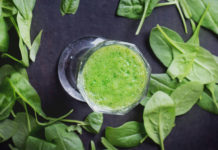What if there were a type of heart attack with no warning signs, which affects younger women in otherwise good health? Unfortunately, there is. It’s called spontaneous coronary artery dissection, or SCAD.
You may know that heart disease is the number #1 killer of men and women. But many people have never heard of a SCAD heart attack. No matter who you are, but especially if you’re a younger woman, read on to learn more about what it is and what steps to take.
What Is A SCAD Heart Attack?
A SCAD heart attack begins when the coronary artery wall gets a small tear. The artery wall has three layers. When the innermost layer tears, blood seeps between the layers where it can clot or cause an intramural hematoma. The artery narrows and can eventually become blocked. Blood then cannot reach the heart, and a heart attack results.
Who Is At Risk?
According to the Mayo Clinic, SCAD most commonly affects women in their 40s and 50s. However, it can occur at any age. More than 90% of SCAD patients are female. It’s responsible for 40% of heart attacks in women under the age of 50.
Patients are generally healthy and within their recommended weight. They don’t have typical heart attack risk factors like smoking or diabetes. Different sources report anywhere from 10% to 30% of cases occurring during pregnancy or soon after childbirth. A 2008 study out of the Netherlands stated that, “One third of all SCAD cases occur in the peripartum period, of which one third in late pregnancy and two thirds in the early puerperal [immediately post-delivery] period. The peak incidence is in the second week after delivery.”
It may be associated with other artery problems such as fibromuscular dysplasia (FMD). According to the same study mentioned above, it is also associated with connective tissue diseases such as Marfan’s syndrome and Ehlers-Danlos type IV. Some researchers also say it also appears to run in families.
As with so many illnesses, stress can be a factor. Web MD reports, “Patients often report extreme emotional or physical stress in the days before a SCAD, like a death in the family, breakdown in marriage, job stress, or intense physical exercise — even lifting heavy items.”
How Is SCAD Diagnosed and Treated?
SCAD is often misdiagnosed and it cannot be diagnosed with an EKG. SCAD can only be diagnosed with an angiogram, or X-ray of the arteries. The American Heart Association is working to increase education and awareness and thus, increase proper diagnosis. Sometimes people wait a long time before going to an emergency room because they don’t think they could be having a heart attack.
If you do experience a SCAD attack, your doctor will likely treat you with aspirin and an anti-platelet medication, along with strict blood pressure control. He or she may also recommend cardiac rehabilitation, emotional support, education and exercise. More invasive treatment may be required, especially if a large artery is affected.
The good news is, your chances of dying from a SCAD attack are much lower than the chances for a typical heart attack. The death rate lies between 1% and 5%. The chances of a recurrence are around 20%.
What To Do Now
Although you may feel discouraged reading about this insidious disease, take charge of your health! Educate yourself and control the things you can control.
Everyone should know the signs of a heart attack, regardless of age, sex, weight, or other physical factors. “Any type of chest pain is abnormal,” says Dr. Kathy Magliato, president of the Greater Los Angeles American Heart Association. “If you’re a young healthy woman and you have chest pain, you need to get medical attention.” Other symptoms in women include nausea, fatigue, lightheadedness, or pain in the head, neck, or jaw.
Even though a SCAD heart attack defies expectations, your best bet is still to pursue optimal overall health. Eat well and exercise, limit unnatural chemicals introduced to your body, and tend to your emotional well being. Read more on natural ways to boost heart health.
—
Photo credit: Maridav / bigstock.com








